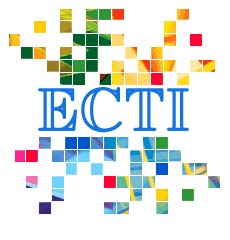A New Structural No-Reference Rule Based Blur Metric for Classification of Blurred Home Photos
Main Article Content
Abstract
Automatic classi¯cation of blurred photos from family album has drawn researchers' attention to avoid computational overhead of deblurring and measurement of blur in the photos. Therefore, the primary goal of this paper is to classify the blurred photos rather than measuring degree of blurness in the image or to deblur an image. The blur metric is proposed based on the fact that the number of Canny edge components is more than the number of Sobel edge components in blurred photos. Similarly, for non blurred photos, the number of Canny edge components is less than the number of Sobel edge components. The rules are devised based on the width of Canny and Sobel edge components to classify the blurred photos. The experimental results of the proposed metric are compared with the results of the existing methods for the purpose of evaluation.
Article Details
This journal provides immediate open access to its content on the principle that making research freely available to the public supports a greater global exchange of knowledge.
- Creative Commons Copyright License
The journal allows readers to download and share all published articles as long as they properly cite such articles; however, they cannot change them or use them commercially. This is classified as CC BY-NC-ND for the creative commons license.
- Retention of Copyright and Publishing Rights
The journal allows the authors of the published articles to hold copyrights and publishing rights without restrictions.
References
[2] Ziya Telatar, "Adaptive filter design for image deblurring by using multi-criteria blurred image information", Digital Signal Processing, 15,pp 4-18, 2005.
[3] Tubagus Maulana Kusuma, Hans-Jurgen Zepernick and Manora Caldera, "On the Development of Reduced-Reference Perceptual Image Quality Metric", Proceedings of the 2005 Systems Communications (ICW 05),2005.
[4] Pina Marziliano, Frederic Dufaux, Stefan Winkler and Touradj Ebrahimi, "Perceptual blur and ringing metrics: application to JPEG2000", Signal Processing: Image Communication 19, pp 163-172, 2004.
[5] Tubagus Maulana Kusuma and Hans-Jurgen Zepernick, "A Reduced-Reference Perceptual Quality Metric for In-Service Image Quality Assessment", Joint Workshop on Mobile Future and Symposium on Trends in Communication Sympotic 03, 26-28, , pp 71-74, October 2003.
[6] P. Marziliano, F. Dufaux, S. Winkler and T. Ebrahimi, "A no-reference perceptual blur metric", Proceedings of the International Conference on Image Processing, Vol. 3, Rochester, NY, pp 57-60, 2002.
[7] Timothy K. Shih, Rong-Chi Chang and YuPing Chen, "Motion Picture Inpainting in Aged Films", ACM Multimedia 05, November, Singapore, 6-11, pp 319-322, 2005.
[8] James H. Elder and Steven W. Zucker, "Local Scale Control for Edge Detection and Blur Estimation", IEEE Transactions on Pattern Analysis and Machine Intelligence, Vol. 20, No. 7, July 1998.
[9] Amlan Kundu, "Robust edge Detection", Pattern Recognition, Vol. 23, No. 5, pp 423-440, 1990.
[10] D.S Guru, B.H Shekar and P. Nagabhushan, "A simple and robust line detection algorithm based on small eigenvalue analysis," Pattern Recognition Letters 25, pp 1-13, 2004.
[11] J, F Canny, "A Computational approach to edge detection," IEEE Transactions on Pattern Analysis and Machine Intelligence, 8(6): 679698, Nov 1986.

